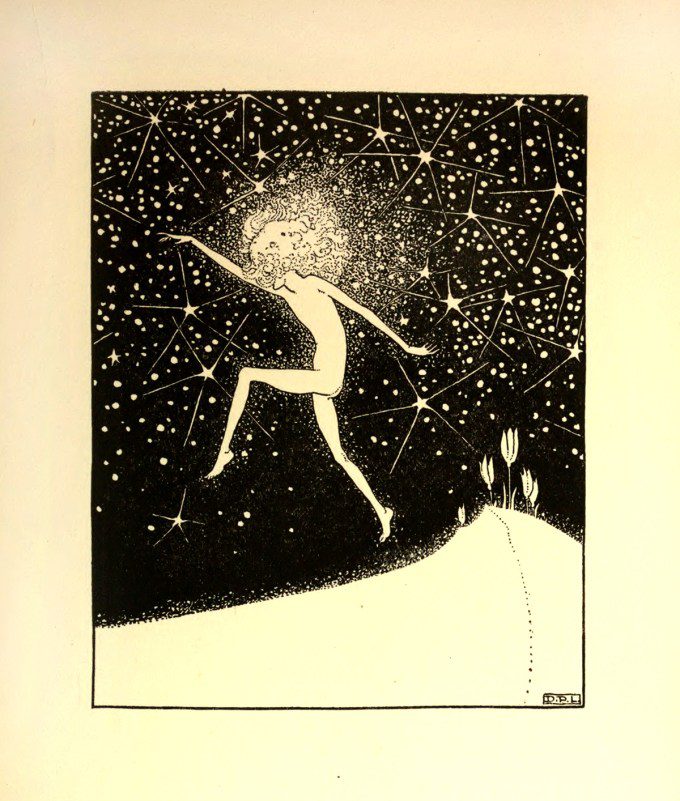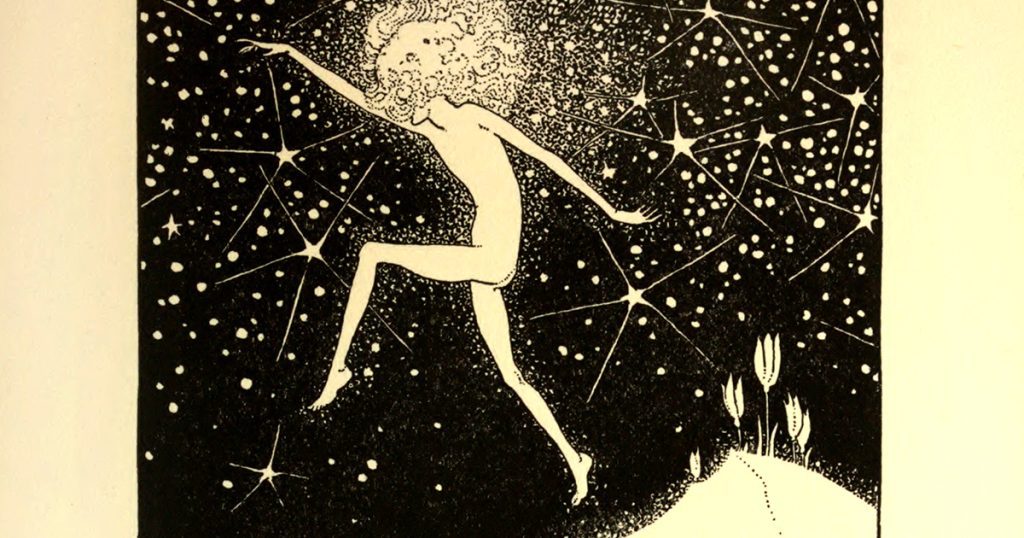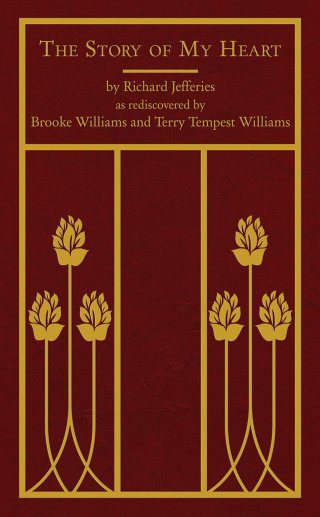The paradox is that human life, existing between the time of starlings and the time of stars, gains meaning internally, but the self is a creation of the mind, bringing order to the chaos and impermanence. Occasionally, something like an encounter with nature or a work of art can trigger what Iris Murdoch called an 'occasion for unselfing,' breaking down the illusion and making you feel connected to everything in existence. This is what Abraham Maslow referred to as 'peak experiences' — the most joyful and perfect moments of life that lead to transcendence. He believed every religion emerged from these moments of personal insight or ecstasy. Maslow discovered that these experiences typically bring a profound sense of belonging to the universe, outside of time. great love Dorothy Lathrop , 1922. (Available as stationery cards I know of no more beautiful or deeply felt account of such contact with eternity than the oneRichard Jefferies
relays in his spiritual autobiography The Story of My Heart public library

two centuries of ravishing reflections on time , from Borges to Nina Simone, then revisit Jefferies on nature as a prayer for presence and his contemporary Hermann Hesse on (exploring the spirit underneath the individual).
This is the big paradox: that human life, lived between the time of starlings and the time of stars, gains significance completely within the person, but the person is a distortion of the mind, a creation of unity that makes the disorder and impermanence tolerable. Once in a while, if you are fortunate, something — an experience with nature, a masterpiece, a profound love — ignites what Iris Murdoch described as “an occasion for unselfing,” taking apart the construct of illusion and connecting you with everything that ever existed and ever will exist. Because time… read article is the revelation that presence — this prayerful attention to the here and now — is the supreme portal to eternity. A generation after Kierkegaard insisted that “the moment is not properly an atom of time but an atom of eternity” and a century before Mary Oliver drew on Blake and Whitman to observe that “all eternity is in the moment,” Jefferies reflects:
Realising that spirit, recognising my own inner consciousness, the psyche, so clearly, I cannot understand time. It is eternity now. I am in the midst of it. It is about me in the sunshine; I am in it, as the butterfly floats in the light-laden air. Nothing has to come; it is now. Now is eternity; now is the immortal life. Here this moment, by this tumulus, on earth, now; I exist in it. The years, the centuries, the cycles are absolutely nothing; it is only a moment since this tumulus was raised; in a thousand years it will still be only a moment. To the soul there is no past and no future; all is and will be ever, in now.
And yet it is only through the body — this perishable reliquary of life — that the mind can grasp the abstraction of timelessness; it is only through absolute presence with the aliveness of the moment that the soul can sing with the ecstasy of eternity. Jefferies writes:
I dip my hand in the brook and feel the stream; in an instant the particles of water which first touched me have floated yards down the current, my hand remains there. I take my hand away, and the flow — the time — of the brook does not exist to me. The great clock of the firmament, the sun and the stars, the crescent moon, the earth circling two thousand times, is no more to me than the flow of the brook when my hand is withdrawn; my soul has never been, and never can be, dipped in time. Time has never existed, and never will; it is a purely artificial arrangement. It is eternity now, it always was eternity, and always will be.
Complement these fragments of the wholly soul-slaking Story of My Heart with two centuries of ravishing reflections on time, from Borges to Nina Simone, then revisit Jefferies on nature as a prayer for presence and his contemporary Hermann Hesse on discovering the soul beneath the self.




